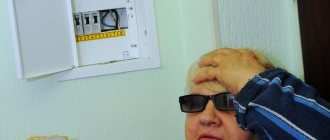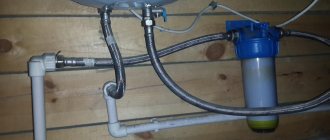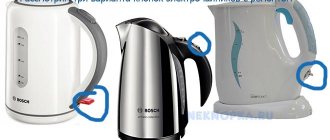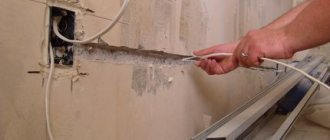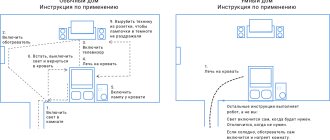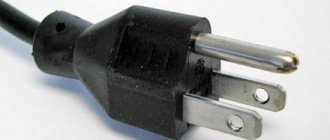When designing houses, the mandatory presence of ventilation in utility rooms, kitchens and, of course, in the bathroom and toilet is taken into account. This is necessary to ensure natural air exchange in these rooms.
As for the bathroom and toilet, it is thanks to ventilation that the maintenance of normal air humidity is ensured, the timely evacuation of exhaust air and its replacement with clean air.
If the exhaust hood in the bathroom and toilet does not work well, then air stagnation is inevitable, which in the near future will result in the appearance of mold and mildew, and will also negatively affect the decoration of these rooms. An extremely unpleasant situation, isn't it? But what to do in this case and how to prevent it?
In this article we will talk about the causes of ventilation problems in the bathroom and toilet, and also look at the best ways to solve them.
How is the ventilation of the bathroom and toilet arranged?
Ventilation is, first of all, a whole system consisting of air channels and shafts. When designing it in a private or apartment building, stable performance is calculated with proper operation.
The ventilation device includes:
- A ventilation duct (ventilation shaft), which is a set of solid straight air channels and vertical shafts. The shaft and channel can be either round or square. A prerequisite for stable air movement is their cleanliness and integrity. There are also horizontal ventilation ducts, but their length should not exceed two meters, otherwise air movement will become difficult.
- A ventilation outlet is a hole in the wall of a bathroom or toilet that is connected to a ventilation duct. The size of the ventilation outlet opening does not necessarily correspond to the cross-section of the duct and is calculated based on creating the throughput of the maximum possible volume of air.
- Ventilation grille is necessary to protect the ventilation duct from debris getting into it, as well as from the possible entry of insects and rodents into the room. Made from plastic or metal. It has a decorative appearance, since its front part should fit into the interior of the room.
It is worth noting that ventilation can be natural and forced . The difference lies in the use of additional devices to mechanically create more thrust.
The dampest and most humid room in the apartment is the bathroom. Proper operation of the hood will not allow humidity to rise and, as a result, the formation of mold, dampness, or rust.
Additional devices are installed in cases where natural draft does not provide effective ventilation of the room.
What to do?
Since 2014, we have developed several optimal options for solving this problem. There are both more expensive and cheaper devices on the market, but they are not the best option in terms of price/quality ratio. For 5 years we have installed all types of air supply units, valves, heat exchangers, it’s hard to surprise us with anything, we held everything in our hands, twisted and turned, listened.
- To ensure inflow, we recommend the Tion O2 breather. Price from RUB 24,990, installation RUB 4,900.
- If your budget is limited, look at the KIV-125 valve. The price of the valve is 1900 rubles, installation is approximately 3000 rubles.
- If you want a more modern device, look at the “influx” Tion 3S. Cost 37,990 rubles, installation 4,900 rubles.
Features of the operation of ventilation systems
Ventilation of premises in apartment buildings and private sector buildings can be ensured by proper arrangement of natural and forced ventilation. Let's look at these two types of systems in more detail.
Type #1 - natural ventilation
Natural is ventilation performed according to general standards. It is used in all standard apartment buildings.
The principle of operation is based on the law of convection, the essence of which is that due to the difference between the temperature inside the room and the temperature outside, as well as due to the difference in pressure, which is different outside and inside the room, the air is independently drawn into the ventilation duct.
The force with which the air flow enters the channel is called thrust. The air that goes into the ventilation makes room for fresh air.
Type #2 - forced ventilation
The main difference between forced ventilation, as mentioned above, is that additional equipment is used, namely household fans of various types (axial, duct or radial).
The operating principle is based on additional traction enhancement due to the rotation of the blades of these devices. Ventilation equipment is installed independently.
Forced ventilation in most cases is an independent improvement of natural ventilation. It must be carried out in compliance with the standards (in particular regarding fan power), otherwise such an installation may disrupt the natural ventilation system of the room in an apartment building.
It is strictly prohibited to block the ventilation hole in the bathroom or toilet. Overlapping may be justified when installing forced supply and exhaust ventilation
Depending on the functions performed, forced ventilation is:
- exhaust , when the air flow is drawn out into the street using a fan;
- supply air , when the fan, on the contrary, supplies air to the room, and the full ventilation cycle is ensured by the air leaving naturally through shafts and ventilation ducts;
- supply and exhaust , when it is possible to both force air into the room and remove it from it.
The existing forced-air supply and exhaust ventilation is used for large rooms when the natural mutually regulated air movement in the room is not enough.
Preventive measures for long-term performance of the hood
In order for the air filtration structure to serve as long as possible and without major breakdowns, it is necessary, first of all, to follow the operating instructions, treat household appliances with care and care for their components.
- Avoid heating the empty stove under the hood, especially an open fire; these experiments can end sadly.
- The system should be mounted above a gas stove at a height of 70-80 cm, and above an electric stove - at 60-70 cm. If installed lower, deformation of the elements is possible, and when suspended above this range, the efficiency will be weak.
- Turn on the device a few minutes in advance before heating the burner and turn it off a quarter of an hour after cooking, then the elimination of odors and fumes will be especially effective.
- Clean and rinse the metal grease trap every 3-4 weeks. Change disposable filters every six months or more often, depending on the intensity of use of the hood. Failure to comply with this condition will result in oil particles penetrating inside the engine and settling on structural elements, leading to overheating and engine failure.
Cleaning the strainers - Start the speed mode from the first stage, gradually increasing. Use the maximum speed to a minimum to prevent premature engine wear.
- Provide additional protection against voltage surges in the electrical network. Of course, the design of the hood includes a fuse, but it cannot always cope with network instability. An additional relay will help solve this issue, which will turn off the power supply during voltage surges.
Voltage relay
As you can see, a kitchen hood is not the most complex electrical appliance, and minor repairs can be done at home, with basic knowledge of electrical engineering and the necessary tools. Most problems do not require serious intervention, but if the cause of the malfunction could not be determined on the spot and you cannot repair the hood yourself, then you should resort to the services of craftsmen and service centers.
What kind of ventilation is needed in the bathroom and toilet?
According to the designers, natural ventilation should cope with air circulation on its own. However, normal air circulation in the room is often not ensured by natural ventilation.
This happens for three reasons:
- with natural ventilation, a constant flow of outside air into the room must be ensured - the door must be open, a special internal window must be opened, a supply valve must be installed in the wall;
- the internal walls of the ventilation ducts become dirty - dust, dirt, debris and cobwebs appear in the ventilation over time and in the absence of cleaning;
- External ventilation outlets become clogged.
Thus, to organize effective ventilation of the toilet and bathroom, it is more advisable to use forced ventilation. It will ensure a quick change of air in the room, remove odors and reduce humidity in the shortest possible time.
Full air ventilation cannot be provided by an exhaust duct or a fan if there is no sufficient air flow into the room. It is the balanced amount of incoming and outgoing air that affects the normal intensity of air exchange
It is worth noting that to determine the state of ventilation, it is enough to use a sheet of paper or a lit match brought to the ventilation grille. For optimal operation of the ventilation system, the flame should deviate significantly towards the channel, and the sheet of paper should be attracted to the grille.
If this does not happen, then we can talk about a problem with ventilation. One of the reasons for insufficient traction is the absence or weak air flow. Which may be a consequence of the tightness of the doors installed in the bathroom/toilet. This obstruction to the flow of fresh air is the reason that exhaust humid air cannot be drawn out of the room even with a properly functioning hood and with the fan turned on.
When choosing and installing exhaust devices, you must be guided by the main governing documents: SNiP 41-01-2003 (“Heating, ventilation and air conditioning”) and SNiP 2.08.01-89* (“Residential buildings”), which, by introducing certain changes, have been updated as of 2022 In particular, in the bathroom and toilet there must be an air exchange of at least 25 cubic meters per hour. If the bathroom is combined, then at least 50 cubic meters per hour.
How to repair a kitchen hood with your own hands
If the hood functioned without failure for several years and suddenly broke down, there is no need to worry too much, but even if it has not lasted even a year, it is too early to panic. It is quite possible to fix many problems at home, without calling a specialist or sending them to a service center. The following types of faults exist:
Lighting doesn't work
- The light bulb has burned out. It is very easy to change to a new one, which any housewife can do.
- The backlight switch has become unusable. Checking the switch contacts will help.
Hood with backlight on
The hood has stopped working and will not turn on
- Lack of electricity in the network. The cable, plug, or socket may be damaged. It is necessary to make sure that there is voltage in the outlet, the integrity of the supply circuit and the control panel. If the problem is in the cable, it will be immediately obvious by mechanical damage and smell.
- The switch is faulty. The solution is to “ring” it with a multimeter and replace it if necessary.
- The fuse has blown. During voltage surges, these elements often burn out, damaging the entire structure.
- The motor is broken. One of the main reasons is often overheating of the device. As a rule, you cannot fix such a breakdown on your own. You will have to return the equipment for service or buy a new one.
- To prevent overheating, you need to pay enough attention to the cleanliness of the grease removal plates, clean them in a timely manner and change the filters.
Faulty motor
Insufficient draft when the hood is running
- The first step is to clean or change the filters, since the draft may be lost due to contamination with grease. The effectiveness of the device with a clogged filter is negligible.
- Disassemble the air duct pipe and make sure there is no debris or grease deposits.
- Check the air movement in the common house ventilation duct using a sheet of paper or fire.
- The reason probably lies in an unusable fan whose blades have broken. The way out is to replace the part.
Air draft check
Control panel malfunction
If the buttons are deformed or partially fall out, or the contact is burned out, you can try to re-solder the circuit or completely replace the entire button block.
Inability to change gears
- The simplest reason is a button or slide switch falling out due to frequent mechanical impact. You can disassemble and clean the contacts, but the most effective way is to install a new part.
- Quite expensive models of hoods have touch control, but for all its visual appeal, the sensor is very difficult to repair.
- In addition, you need to pay attention to the starting capacitor and the track on the control board. But for this type of work, at least minimal knowledge in the field of electrical engineering is required.
Push button speed switch
Reasons for poor hood performance
Poor performance of exhaust ventilation cannot be caused only by contamination of ventilation ducts and outlets or the creation of an artificial obstacle to the occurrence of draft.
To get rid of high humidity and mold in the bathroom, it is prudent to install heated floors or change heated towel rails to more modern ones. This undoubtedly speeds up the process of drying the released moisture, but it will not be possible to completely get rid of mold and mildew if there are obvious problems with ventilation.
There are a number of other reasons why the hood in the toilet and/or bathroom stops working.
Among them are the following:
- High air temperature outside . Air circulation occurs more efficiently during periods of the year when the temperature outside the window drops below +5 degrees.
- Installation of axial fan . Due to the design features, when turned off, this type of fan interferes with the free penetration of air. The motor and blades of the axial fan do not move without electrical current.
- Excessive exhaust devices are too powerful . Using a fan that is too powerful will disrupt the designed air movement throughout the entire ventilation system. As a result, the dispersed air does not go outside, but enters other rooms of the apartment building.
- Redevelopment and illegal interference in the general ventilation system . As a result of the changes made, the tightness of the ventilation system may be compromised or one of the channels may be completely blocked. That is why any redevelopment requires approval from government agencies.
- Incorrect installation of the door to the bathroom or toilet . Usually the problem occurs when there are no special ventilation holes in the door leaf (typical of cheap doors) and there is no gap between the floor and the door.
- The appearance of reverse thrust . This problem is typical for the upper floors of apartment buildings due to the appearance of excessive pressure in the ventilation system.
When one of the reasons affecting normal air circulation appears, the humidity in the bathroom and toilet immediately increases.
Condensation on the walls, ceiling or bathroom mirror is the first sign indicating problems with the hood. If the condensation disappears when the door is open, the ventilation is working normally, it is worth widening the opening between the door and the floor. If it does not disappear when the door is open, there is a problem with ventilation
By the way, condensation not only signals problems with ventilation, but can also cause damage to ventilation equipment. For example, as a result of incorrect installation of additional equipment, a gap is formed between the fan and the sub-ceiling of the ventilation system. Due to the cooling of hot air, condensation forms in this gap, which is partially absorbed and partially flows down. The resulting condensation can damage the fan over time.
We also recommend that you familiarize yourself with the reasons why the hood may not work at all, as well as with ways to eliminate them.
What to do if the hood in the kitchen does not draw well
If the hood in the kitchen does not work, then there is little a person can do. Calling a specialist is the best option. This is especially true if the owner of the equipment is not confident in his abilities.
You can contact not only those who install such equipment, but also those who check ventilation in bathrooms, toilets and kitchens in multi-storey buildings (panel, Khrushchev or others). Often they are the ones who help overcome bad drafts on the last floors.
You need to carry out independent repairs when you have the knowledge. In other situations, it is better to invite a specialist.
Methods for determining hood malfunction
There should not be poor ventilation in the bathroom. Otherwise, the level of air humidity increases, which is an indicator of the environmental condition of the premises . Damp air can cause people to feel unwell, feel stuffy and heavy, and also cause exacerbation of chronic diseases.
That is why there is a concept of optimal and permissible indoor air humidity, which is specified in GOST 30494-2011. For a bathroom, the optimal values are 30-45%, acceptable values are up to 60%.
You can prevent the humidity level from rising to critical levels if you detect a malfunction in the hood in a timely manner and fix it. Therefore, if you begin to notice that after visiting the bathroom moisture remains on the walls and mirrors for too long, it is advisable to check the traction force. For this purpose, you can use a sheet of paper (lean it against the ventilation grille) or a lit match (the flame will deviate towards the grille), which will allow you to determine the strength of the exhaust air flow. If it turns out to be too weak, you should call a representative of the management company.
A specialist, using a special air speed meter - an anemometer, will measure the air outflow rate per hour and give a conclusion on non-compliance with the standards. It can also determine the air permeability of the entire riser of an apartment building.
When designing a hood yourself, you should consider installing a fan, especially in situations where the ventilation duct is curved. Otherwise, draft will not be created and the hood will not work.
When installing an exhaust fan, you should consider its location. It should be located further from the entrance and as high as possible. The ideal location is on the opposite wall from the entrance directly under the ceiling. It is then that the air entering the room has time to pass through the entire room before entering the hood
It is worth noting that a utility specialist may not be able to identify the problem if it is related to a neighbor using an overly powerful fan—during the study of the draft force in the system, the exhaust device may be turned off.
In winter, you can also check the hood in the bathroom and toilet yourself. To do this, you need to open wide the window and doors of the room where the ventilation outlet is located. This will accelerate the exhaust draft by displacing warm air with cold air. It is enough to attach a sheet of paper to the exhaust grille. If the ventilation system is working properly, it should stick to the grille.
Is your hood making strange noises?
Many people wonder: why does the hood whistle, make noise, or creaks when it’s working? The answer can be found by reading the technical specifications.
Any model, for example Eleyus Lana 700 60 BL, has a certain noise range, and extraneous sounds appear for several reasons:
1. Factory defect. Determined by special expertise at the service center.
2. Clogged filters or ventilation shaft. To get rid of this problem, cleansing measures are carried out.
3. Incorrect installation of equipment: the presence of a large bending angle, loose connections at fastening points, many narrowings.
4. Inconsistency in the diameter of the exhaust duct. If you connect a hood with a capacity of 600 to 1000 m3/hour to a pipe with a size of 100 mm, although the instructions indicate a minimum of 130 mm, then noise may occur.
Some modifications based on factory settings may be loud. To select the right equipment, it is recommended to study the technical data before purchasing.
Best ways to solve the problem
Now let's talk about what to do if the hood in the toilet or bathroom does not work. Thus, the standard and most effective way to solve a problem related to a ventilation malfunction is to contact the management company, which must take effective measures to restore the normal operation of the hood. Their responsibilities include checking, cleaning and restoring ventilation ducts.
They are also obliged to force the residents of an apartment building, who independently dismantled or changed the ventilation ducts during redevelopment, to restore their original condition.
The main requirements for a bathroom fan are: power, quiet operation and moisture protection (IP). The optimal indicator for the latter is IP 25. To maintain normal audibility, the noise level should not exceed 48 dB. Well, the fan power should not exceed the created air exchange of 25 cubic meters per hour for a toilet and bathroom and 50 cubic meters per hour for a combined bathroom
However, engaging a management company is a rather lengthy process.
Therefore, some problems can be solved independently:
- If there is a problem with the “backdraft” effect, when air from the hood enters the room, then it can be solved in two ways: either by installing a blower fan, which makes the air pressure in the room stronger, or by installing a decorative grille with a check valve in a standard hood hole, which will create an obstacle to the penetration of air into the room from the exhaust system.
- Increasing the height of the duct at the end of the ventilation duct will help improve the performance of the hood on the upper floors of an apartment building. It is located on the roof of the house and you can increase its length yourself using a corrugated pipe. You can also install a deflector, which, under the influence of wind, will create additional draft in the system.
- The problem with the hood in a private house can be solved by installing a separate air duct. It will provide additional air flow and, therefore, increase the pressure in the room, which will create an air circulation process. A vertical channel with access to the roof will work most effectively.
- When the hood does not work in one of the rooms, the problem is solved by installing a fan. Only this installation must be performed in strict accordance with regulatory requirements in order to avoid consequences. Currently, you can buy fans equipped with a humidity sensor, a time relay and a motion sensor, which allows you to use them most efficiently while saving energy.
You should be careful about the cleanliness of the decorative ventilation grille. There are cases of dust clogging a special mesh, which is necessary to prevent insects from entering the apartment, as a result of which air cannot flow normally into the ventilation duct.
It is also necessary to regularly clean the fan in the bathroom and toilet, taking into account the manufacturer’s recommendations for caring for a specific model.
How to check the condition of exhaust ducts?
We create a guaranteed supply of air from outside: open the window. It makes absolutely no difference which room. We also open the interior doors so that there are no obstacles from the window to the hood. And we look to see if there is any draft in the exhaust ducts (for example, with a piece of toilet paper). If there is draft in the kitchen and toilet when the window is open, then the reason is a lack of air flow. If there is no draft when the window is open, your exhaust ducts are not working and require examination. But (!) according to the standards, this procedure should be carried out at an outside temperature no higher than +5 degrees, since in the hot season the draft in the channels is minimal or absent at all. In addition, the draft may be weak if you have the last or penultimate floor due to the low height of the channel.
The most common causes of weak traction in the bathroom ↑
If initially the natural hood functioned normally, but suddenly stopped coping with the task, the reasons may be as follows:
- You have replaced the doors with denser ones, a high threshold, which is designed to hold back sudden floods, does not allow air to penetrate from below.
- The residents above were making repairs and accidentally clogged the mine with construction waste.
- The neighbors created a strong forced influx, which provoked a reverse flow of air and became an obstacle to the circulation of air masses.
The deterioration may be related to the time of year. In the summer, hot air from outside blocks the exit of colder masses from the premises and an air jam results, which is why you have to keep the doors ajar.
The hood does not draw and does not remove odors well
This may occur if the device is not used correctly. In order for the hood to effectively cope with odors, it must be turned on in advance, before cooking, and turned off 15 minutes after turning off the stove, and not immediately. By following this basic rule, you will be able to get rid of unpleasant odors in the kitchen forever. A fairly common cause of such “breakdown” is a belated change of filters. Also, carbon filters may simply not work effectively. To repair the hood, the filter must be disassembled, first removed, and the carbon granules replaced with new ones.
To change the grease trap yourself, you need to remove the grate and place it face down, after which you can remove the old dirty filter. The grate should be thoroughly washed with detergent and a new grease trap should be attached to it. Disposable grease traps differ from reusable ones in that they have an inscription that is clearly visible even through the grate. When the filter becomes so dirty that it is time to change it, the inscription is no longer visible. Fiber filters are reusable; after washing and drying, they can be returned to their place, and this can be done repeatedly. Each time you carry out this procedure, you need to thoroughly rinse the grille.
Advice:
Fact 5. Poor draft may be caused by exhaust devices installed on the lower floors.
Another reason that air is not extracted from the apartment may be fans or exhaust devices installed by neighbors below. The rapid flow in the ventilation shaft created by forced-air devices prevents natural ventilation from other apartments.
In addition, on the upper floors, due to the pressure difference, ventilation works worse without any interference than on the lower ones.
In this case, an exhaust fan can provide ventilation. But under one condition, which is discussed below.
Fact 1. Mold, tile decay and rust are often the result of poor ventilation.
The bathroom is the dampest and most humid room, so it is necessary that the ventilation here works properly. Otherwise you cannot avoid:
- musty air, unpleasant odors, condensation and, as a result, the appearance of fungus, mold (unsafe for human health), - the appearance of rust on metal surfaces, - destruction of finishing materials (including darkening and cracking of the grout between tiles, and then chipping the tile itself), - “swelling” of furniture coverings (even from moisture-resistant materials).
If you notice mold, do not rush to buy dehumidifiers or special anti-fungal coatings. First, check the ventilation!
Structure and principle of operation
And first, it’s worth understanding the device in more detail. A modern kitchen hood is essentially an exhaust fan installed in the kitchen above the stove. Additionally, the device can be equipped with channels that remove collected air flows (with steam and grease), or with cleaning filters.
In general, there are two types of exhaust devices:
- diverting;
- filtering.
The former “carry” the air outside the kitchen, while the latter clean the air from steam, smoke, and odors, and then return it to the room. Modern models are universal because they are able to function in both modes.
When the device is connected to the mains, the impeller begins to rotate, drawing in air passing through the filter. Many models have the ability to switch fan speeds. The exhaust hood removes air outside, and the filter hood is equipped with a carbon filter, which is necessary to eliminate odors.
The filter periodically needs to be replaced, so it is necessary to monitor its timeliness. Otherwise, the effectiveness of the device will only decrease. How often should the filter be changed? It all depends on the intensity of use of the device. Typically, the frequency is three months. Carbon elements can change from six months to two years.
